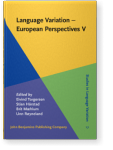Tourists’ attitudes towards linguistic variation in Scotland
This paper joins studies of linguistic variation (e.g. Labov 1972; Dubois & Horvath 2000) and discourse (e.g. Jaworski & Lawson 2005; Jaworski & Pritchard 2005; Thurlow & Jaworski 2010) that consider the intersection between language and tourism. By examining the language attitudes that tourists hold toward linguistic variability in their host community, we find that attitudes differ by context and with respect to tourists’ travel motivations. We suggest that these results are particularly likely in a context like Edinburgh, Scotland, where linguistic variation has an iconic link to place authenticity. We propose that the joint commodification of ‘intelligibility’ and ‘authenticity’ explains this variability. The results raise questions about how the commodity value of travel motivation and the associated context of language use influence language attitudes.
